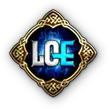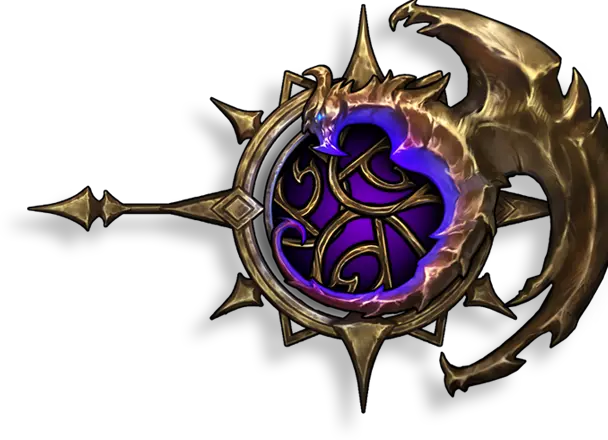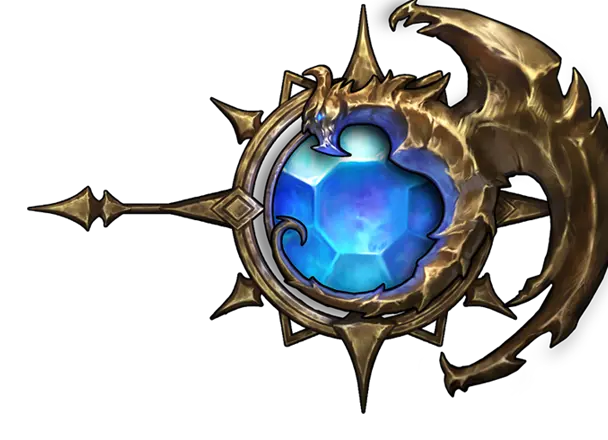Cracking the Code: Understanding the Online Card Game Meta
Exploring Online Card Game Meta
Diving into the world of online card games, understanding the meta is crucial for players looking to stay competitive. The meta, short for metagame, refers to the prevailing strategies, tactics, and deck choices that dominate the game at any given time. Let’s explore the dynamics and evolving strategies of the online card game meta.
Understanding Meta Dynamics
The dynamics of the online card game meta are influenced by various factors, including card releases, balance updates, and player discoveries. In games like Magic: The Gathering, the Standard format rotation is a significant factor. Cards from the two most recent story-related blocks and any Core set released after the older story-related block are allowed (Stack Exchange). This rotation keeps the game fresh and requires players to constantly adapt their strategies.
The community plays a vital role in shaping the meta. In forums like the Dominion Strategy Forum, players like Chris is me, timchen, and Kirian discuss the latest trends, deck builds, and strategies. These discussions help to identify the most effective tactics and counter-strategies, contributing to the ever-evolving meta.
Evolving Strategies
As the meta evolves, so do the strategies that players employ. New card releases and balance updates often lead to shifts in the dominant decks and tactics. For instance, when Wizards of the Coast made changes to the rotation schedule, including having a year with no rotation in September and adding a third year of cards into Standard, it revitalised the format (Stack Exchange). This forced players to rethink their strategies and adapt to the new environment.
Players must be analytical and creative to stay ahead in the meta. They need to identify synergies between cards, anticipate opponents’ moves, and devise counter-strategies. The consistency and synergies of cards in a single standard meta have been impacted by changes in the set release model, moving away from the 3 set block and 1 core set model. This requires players to continuously innovate and refine their deck builds.
To illustrate the evolving strategies, here is a table showing the impact of recent balance updates on a popular online card game:
| Update | Key Changes | Impact on Meta |
|---|---|---|
| Balance Update 1 | Nerfed dominant deck | Reduced win rate of top deck by 10% |
| Card Release 2 | Introduced new archetype | Increased diversity in deck choices by 15% |
| Rotation Cycle | Removed older sets | Shifted focus to newer strategies |
Understanding the online card game meta requires staying informed, engaging with the community, and continuously adapting strategies. By doing so, players can navigate the dynamic landscape of online card games and remain competitive in the ever-evolving meta.
Standard Rotation in Online Card Games
In the world of online card games, understanding the concept of standard rotation is crucial for staying competitive and enjoying the game to its fullest. The rotation cycles and the subsequent shifts in the meta can have profound impacts on how we play and strategize.
Impact of Rotation Cycles
Standard rotation occurs once a year, typically in the fall, and involves the introduction of new card sets while retiring older ones. This keeps the game fresh and encourages players to adapt to new strategies. Cards from a core set or expansion set stay in the standard format for between one to two years after their release.
| Year | Card Sets in Standard |
|---|---|
| 2016 | Last 3 blocks |
| 2017 | Last 3 blocks |
| 2018 | Last 3 blocks |
| 2019 | 3 years of cards |
In 2016, there were changes to the release schedule of new cards and block rotation for the standard format. The standard format consisted of the last three blocks, with each block rotating out after 18 months. This system was designed to keep the meta dynamic and prevent stagnation.
Wizards of the Coast made further adjustments to the rotation schedule to revitalise the standard format. These changes included having a year with no rotation in September and adding a third year of cards into the standard rotation. This allowed for more consistency and synergies within a single standard meta.
Meta Shifts with Rotation
With each rotation, the meta undergoes significant shifts. New cards introduce fresh strategies and combinations, while the retirement of older sets eliminates established decks and forces players to innovate. This dynamic nature of the meta is what keeps the game engaging and challenging.
The consistency and synergies of cards in a single standard meta have evolved due to Wizards moving away from the three-set block and one core set model. This shift has impacted the standard format by creating more diverse and unpredictable gameplay (Stack Exchange).
| Rotation Cycle | Meta Impact |
|---|---|
| Annual | Fresh strategies, elimination of old decks |
| 18 Months | Dynamic meta, prevents stagnation |
| 3 Years | Consistency, synergies within sets |
In Magic: The Gathering Arena, for example, the rotation and meta shifts offer many gameplay possibilities and formats, appealing to both veteran Magic players and those seeking more complexity than other games like Hearthstone or Gwent (PCGamesN).
Understanding these nuances allows us to better navigate the ever-changing landscape of online card games and stay ahead in the competitive scene.
Digital Collectible Card Games (DCCGs)
Popular DCCGs in Discussion
In the vibrant world of Digital Collectible Card Games (DCCGs), several titles consistently capture our attention. The variety in gameplay mechanics, artwork, and strategic depth makes these games a favourite among players. According to a discussion on ResetEra, some of the most popular DCCGs include:
| Game Title | Description |
|---|---|
| Marvel Snap | A quick-paced card battler featuring iconic Marvel characters. |
| MTG: Arena | The digital adaptation of the classic Magic: The Gathering card game. |
| Yugioh: Duel Links | A streamlined version of the Yugioh card game, focusing on duels. |
| Hearthstone | Blizzard’s highly popular card game set in the Warcraft universe. |
| Legends of Runeterra | Riot Games’ card game based in the League of Legends universe. |
| Yugioh: Master Duel | A more complex and traditional Yugioh experience. |
| Shadowverse | A Japanese card game with a rich lore and anime-style graphics. |
| Eternal Card Game | Available on Steam, offering a mix of strategic depth and accessible gameplay. |
These games cater to various preferences and playstyles, ensuring that there’s something for everyone in the DCCG community.
Community Engagement in DCCGs
Community engagement plays a crucial role in the success and longevity of DCCGs. Platforms like ResetEra reveal how players like CharlesAznable, Orayn, Chrono, Teyvat Traveler, DeadeyeNull, and OrangeNova actively participate in discussions, sharing strategies, deck builds, and experiences.
By fostering a strong community, these games not only retain their player base but also attract new players. Engaging with the community helps developers understand player needs and preferences, leading to better game balance and more enjoyable experiences.
Here’s a glimpse of the level of community engagement in some popular DCCGs:
| Game Title | Community Engagement Activities |
|---|---|
| Hearthstone | Regular updates, community tournaments, and developer Q&A sessions. |
| MTG: Arena | Weekly events, community polls, and content creator collaborations. |
| Legends of Runeterra | Interactive lore events, player feedback integration, and forum discussions. |
| Shadowverse | Seasonal competitions, fan art contests, and story-driven expansions. |
The active participation of players in these activities ensures that the games evolve in line with community expectations, creating a dynamic and engaging online card game meta.
Balancing in Online Card Games
Balancing is critical in online card games to ensure a fair and competitive environment. Let’s delve into why game balance is so important and explore strategies for effective balancing.
Importance of Game Balance
Game balance is a fundamental concept in video game design. It ensures that the strengths of a particular strategy or card are offset by proportional drawbacks, preventing any single strategy from dominating the game. Despite designers’ best efforts, some cards or strategies often end up being stronger than others, both in specific situations and overall.
Balancing contributes to a healthy online card game meta by:
- Encouraging Diverse Strategies: A well-balanced game promotes a variety of strategies, keeping gameplay fresh and engaging.
- Enhancing Fairness: It ensures that all players, regardless of their chosen strategy, have an equal opportunity to succeed.
- Sustaining Player Interest: Continuous re-balancing keeps older cards and strategies relevant, maintaining long-term player engagement.
Strategies for Effective Balancing
Effective balancing requires a combination of data analysis, community feedback, and understanding of game design principles. Here are some strategies to achieve this:
Data-Driven Decisions
Utilizing in-game data such as use rates and win rates is crucial. This data helps identify overpowered or underpowered cards and strategies, guiding necessary adjustments.
| Metric | Description |
|---|---|
| Use Rate | Percentage of decks featuring a specific card |
| Win Rate | Percentage of games won when a specific card is played |
Community Engagement
Listening to the player community provides valuable insights into the game’s current state. Players often highlight balance issues and suggest improvements based on their experiences.
Setting Clear Goals
Establishing clear balancing goals helps developers maintain a focused approach. Goals might include promoting strategic diversity, ensuring fairness, and maintaining long-term engagement.
Healthy vs. Unhealthy Meta
Distinguishing between a healthy and unhealthy meta is essential. A healthy meta features a variety of viable strategies and balanced gameplay. In contrast, an unhealthy meta is dominated by a few overpowered strategies, leading to repetitive and less enjoyable gameplay (LinkedIn).
Continuous Re-Balancing
Maintaining game balance is an ongoing process. Continuous re-balancing ensures that all content, including older cards, remains relevant and competitive.
Rewarding Skill and Innovation
Balancing should reward players for developing new strategies and understanding advanced game concepts. This can be achieved by designing cards and mechanics that encourage creative and strategic thinking (LinkedIn).
Effective balancing is a dynamic process that requires attention to detail, community engagement, and a deep understanding of game mechanics. By implementing these strategies, developers can create a fair, engaging, and long-lasting online card game meta.
Notable Online Card Game Titles
Hearthstone: A Game-Changer
Hearthstone, launched by Blizzard on August 11, 2013, truly revolutionised the digital card game landscape. By implementing a closed market system, Hearthstone made the game more affordable and accessible to casual and semi-competitive players. The absence of a trading system ensured that cards held no financial value, widening the game’s accessibility (Medium).
One of Hearthstone’s standout features is its free-to-play model, which allows players to earn packs through daily quests, arenas, and wins. This system provides equal opportunities for all to succeed, regardless of their financial investment in the game.
| Feature | Hearthstone |
|---|---|
| Launch Date | August 11, 2013 |
| Market System | Closed |
| Free-to-Play | Yes |
| Earning Packs | Daily quests, arenas, wins |
Hearthstone’s digital platform also allows for swift balancing changes, a significant advantage over traditional card games. Overpowered cards can be nerfed quickly, and players are compensated with in-game currency (Medium). Additionally, the game’s online format enables players to compete from anywhere, eliminating the need for in-person tournaments and making competitive play more accessible (Medium).
Unique Features of Gwent
Gwent: The Witcher Card Game, released in May 2017, offers a unique experience for digital card game enthusiasts. Gwent stands out by being particularly generous to free-to-play (F2P) players. The game’s reward system, based on round wins rather than game wins, allows casual players to complete daily rewards in less time, making it more accessible.
Gwent also differentiates itself through its gameplay mechanics, which focus on strategic depth and resource management. Players must balance the use of their cards across multiple rounds, adding an extra layer of strategy compared to other digital card games.
| Feature | Gwent |
|---|---|
| Launch Date | May 2017 |
| Free-to-Play | Yes |
| Reward System | Based on round wins |
| Gameplay Focus | Strategic depth, resource management |
Gwent’s daily win and rewards system ensures that all players, regardless of their time commitment, can enjoy the game and compete effectively. This approach has made Gwent a favourite among players who may not have the time for extended gaming sessions but still want to engage competitively.
By exploring these notable titles, we can see how different approaches to game mechanics, market systems, and player rewards influence the online card game meta. Both Hearthstone and Gwent have set high standards in the digital card game world, each offering unique experiences tailored to different player preferences.
Future of Digital Card Games
As we look ahead to the future of digital card games, it’s essential to understand the market models and the accessibility of these platforms. These factors significantly influence the competitive scene and the overall player experience.
Market Models in Digital Platforms
Digital collectible card games (DCCGs) are adopting various market models to attract and retain players. One notable example is Valve’s Artifact, which introduced a pay-to-play (P2P) model. Players needed to purchase the game at a price point of $19.99 and could buy and sell cards through the Steam market (Medium). This approach created an open market, but also posed challenges for casual and free-to-play (F2P) players.
| Game Title | Market Model | Price Point | In-Game Purchases |
|---|---|---|---|
| Hearthstone | Free-to-Play (F2P) | $0 | Yes |
| Artifact | Pay-to-Play (P2P) | $19.99 | Yes |
| Magic: The Gathering Arena | Freemium | $0 | Yes |
Hearthstone, on the other hand, adopted a free-to-play (F2P) model, allowing players to access the game for free while offering in-game purchases for card packs and cosmetic items. This model has proven successful in attracting a broad audience and keeping players engaged through regular updates and expansions.
Accessibility and Competitive Scene
One of the significant advantages of digital platforms is the increased accessibility to the competitive scene. Blizzard’s Hearthstone has been at the forefront of this shift, hosting online tournaments and duels that eliminate the need for in-person events. This online format enables players to compete conveniently from anywhere, broadening the pool of eligible players and fostering a more inclusive competitive environment (Medium).
| Game Title | Competitive Accessibility | Online Tournaments | Offline Events |
|---|---|---|---|
| Hearthstone | High | Yes | Yes |
| Artifact | Moderate | Yes | No |
| Magic: The Gathering Arena | High | Yes | Yes |
By hosting online tournaments, digital card games can reach a global audience, allowing players from different regions to participate without the constraints of travel and accommodation costs. This accessibility not only enhances the competitive scene but also promotes community engagement and growth.
The future of digital card games lies in their ability to adapt to evolving market models and enhance accessibility for players. By exploring different approaches and leveraging the advantages of digital platforms, these games can continue to thrive and captivate a diverse audience.
Legends of Elysium (LOE) is a revolutionary FREE-to-play strategy game merging collectible cards with the complexity of board games. Take control of a vibrant fantasy realm with distinctive races, customizable heroes, and boundless strategic options.
From DA Games, LOE offers:
- Spectacular visuals that animate Elysium ✨
- Competitive multiplayer leagues for skill testing ⚔️
- Thrilling battlefield challenges and eSports tournaments
- Play-and-earn systems to turn your playtime into profit
Join the legends now!
[CTA_BUTTON_PLAY]







